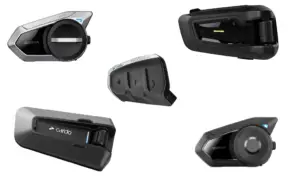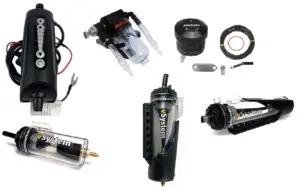Hey. There are many claims online, especially in the comments on YouTube stating that the shaft drive takes away up to 25% of the engine power on the motorcycle. Let’s discuss why this number is completely wrong and why real loss hardly gets to 5%.
From the physics lessons in school, we know that energy can’t simply disappear. In the case of a motorcycle shaft drive – energy would go from kinetic into heat due to friction in the bevel gears, which changes the direction of the power flow by 90 degrees.
This means that if shaft drive would take 25% of power, then on a 100 horsepower bike – 25 horses would turn into a heat due to friction. This is like using 20 electric kettles to heat up 1 liter of water. Taking into account the dimensions of the shaft drive casing and the fact that the casing is made of aluminum (soft metal with relatively low boiling temperature) – it would simply melt the shaft drive within 2 minutes at full engine power.
So how much horsepower is lost in the shaft drive mechanism?
The reality is that shaft drive requires more energy per 1 rear wheel rotation than chain or belt. The first reason for that is a larger friction in the bevel gears. The second reason is the heavy-weight oil used inside the shaft drive that requires additional energy to rotate gears through.
So at 50 km/h (31 mph) motorcycle engine would require an additional 1 horsepower to cover the shaftdrive rotation. And at 100 km/h (62mph) that would be approximately 2 horsepower. For older engines with lesser efficiency and less power – that would result in an additional 15-25% in fuel consumption. This is how the myth about 25% shaft drive power loss appeared. For modern engines with 100+ horsepower this 1-2 horsepower loss is nothing.
So does shaft drive increase fuel consumption compared to chain drive?
Yes, it does. To ride at a constant 100 km/h on a modern adventure bike with no headwind – you only need 12-14 horsepower depending on the aerodynamics of your bike. So your engine has to output that amount of power. If you add an additional 2 horses to compensate for the shaft drive – now you need 15-16 horsepower output from your engine. Which, as you can see, is an additional 10-15% that your engine needs to generate.
This results in an additional 10% fuel consumption. A well-maintained chain at that speed would ask for a half horsepower instead of 2 and as a result – you would have a lower fuel consumption with chain drive.
The Bottom Line
When it comes to shaft drive power loss – stop thinking in terms of the percent of your engine’s total power. Know that the shaft final drive will use a fixed 2 horsepower at 100 kmh on itself. It does not matter if your motorcycle’s engine has 40 horsepower or 150 – shaft drive will ask for 2 horsepower.
Secondly, remember that motorcycles require just 12 horsepower to go constant 100 km/h on flat ground and these additional 2 horsepower lost in the shaft drive will result in an additional 10% fuel consumption at that speed. After 20 minutes of riding shaft drive casing will heat up to 20-40 degrees Celsius and stay at that temperature.
Now you know a little bit more about shaft drives – go check this list of shaft-driven adventure bikes and ride safely.





